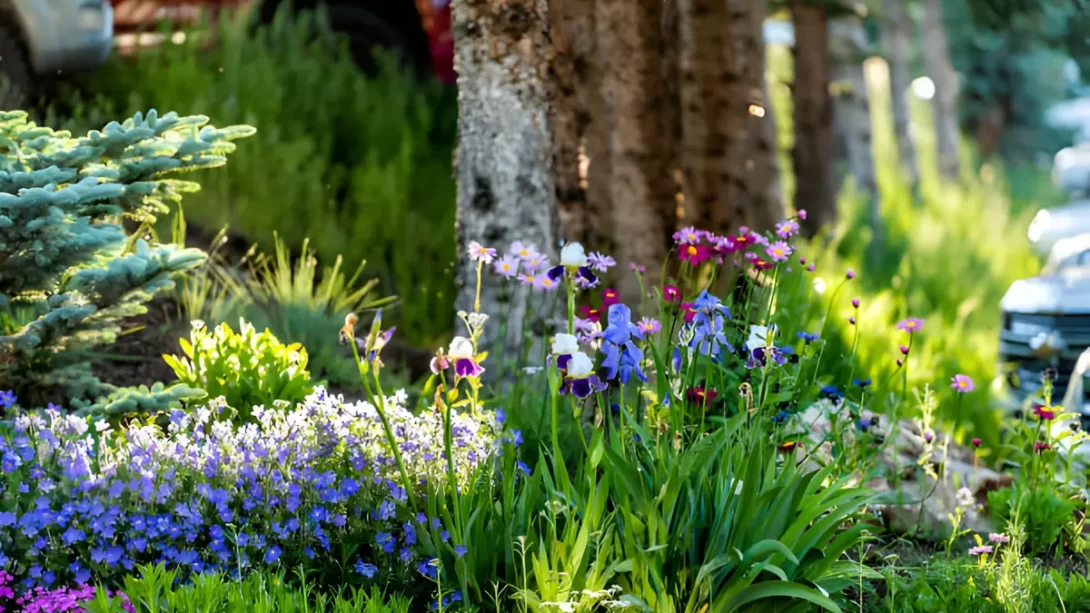Irises, with their captivating blooms and elegant foliage, are a staple in many gardens. Their striking appearance not only adds a touch of sophistication but also invites opportunities for creative companion planting. Understanding which plants complement irises not only enhances the visual appeal of your garden but can also contribute to a healthier and more vibrant plant community.
Growing Conditions for Irises
To select the best companions for irises, it’s crucial to first understand their growing conditions. Irises thrive in well-drained soil, require full to partial sunlight, and need moderate watering. This preference for specific conditions means that their companion plants should ideally share similar environmental needs. This approach ensures that all plants in the vicinity flourish without one overshadowing the other.
Design Considerations
When planning what to plant in front of irises, consider both aesthetics and practicality. Color coordination can create a visually pleasing palette, while contrasting textures add depth and interest to your garden. Additionally, think about the mature heights and spreads of the plants. This foresight prevents taller plants from obscuring your irises and allows each species its own space to shine. A balanced garden design considers these elements to create a harmonious and attractive landscape.
Best Companion Plants for Irises
Low-Growing Annuals and Perennials
Plants that remain low to the ground can be perfect companions for irises, as they won’t compete for space and will add a layered effect to your garden. Consider annuals like Pansies (Viola spp.), which offer a delightful color contrast, especially in spring. Perennials such as Creeping Phlox (Phlox subulata) and Catmint (Nepeta spp.) not only provide extended blooms but also attract beneficial pollinators. These plants typically share the irises’ love for well-drained soil and full sun, making them ideal companions.
Mid-Height Plants
For a mid-level layer in front of your irises, select plants that offer both contrasting colors and interesting textures. Lavender (Lavandula spp.), with its silvery foliage and fragrant purple flowers, is an excellent choice. Similarly, Salvia (Salvia spp.), known for its spikes of vibrant blooms, can create a stunning visual impact. Daylilies (Hemerocallis spp.), with their strappy leaves and wide range of flower colors, complement irises beautifully. These plants help to bridge the height gap between low-growing species and the taller irises, creating a cohesive look.
Bulbs and Tubers
Integrating other bulbs and tubers can synchronize blooming times and add seasonal interest. Spring-flowering bulbs like Daffodils (Narcissus spp.) and Tulips (Tulipa spp.) bloom around the same time as many irises, creating a burst of color in the garden. Alliums, with their striking spherical blooms, provide an interesting architectural element. These bulbs are planted in the fall, require minimal care, and most importantly, don’t compete heavily with irises for nutrients and space.
Ground Covers as Companions
Ground covers can be a practical addition in front of irises, filling in gaps and adding textural contrast. Sedum (Sedum spp.), known for its succulent leaves and star-shaped flowers, is a hardy choice that thrives in similar conditions as irises. Ajuga (Ajuga reptans), with its dense foliage and spikes of blue flowers, also complements irises by providing a lush, low-maintenance ground layer. These ground covers not only enhance the beauty of the garden but also help in suppressing weeds and maintaining soil moisture.
Avoiding Incompatible Plants
While many plants can thrive alongside irises, some should be avoided. Plants that require significantly more water, like certain ferns or hostas, might lead to overwatering issues for irises. Similarly, avoid plants prone to diseases or pests that could adversely affect irises. Plants with aggressive growth habits should also be avoided as they might overpower and overshadow the irises.
Care and Maintenance for Companion Planting
In a mixed bed with irises and their companions, consider the overall care and maintenance. Ensure consistent watering, keeping in mind that irises prefer not to be overwatered. Fertilizing should be done with care; a general-purpose, balanced fertilizer is often sufficient. Regular pruning and deadheading of companion plants will keep the bed tidy and encourage more blooms. Monitoring for pests and diseases is crucial, especially in a diverse planting, to keep all plants healthy.
Conclusion
Companion planting with irises can transform your garden into a vibrant tapestry of colors and textures. By choosing the right plants to accompany your irises, you create a harmonious and visually appealing space. Remember, gardening is not just about following guidelines but also about experimenting and expressing your personal style. With the right companions, your irises can truly shine, making your garden a delightful showcase of beauty and diversity.




